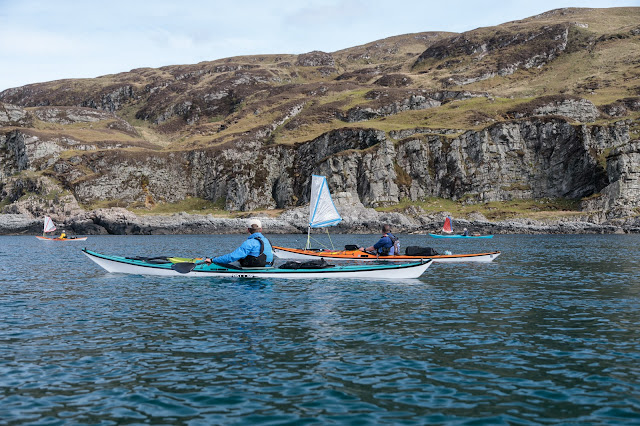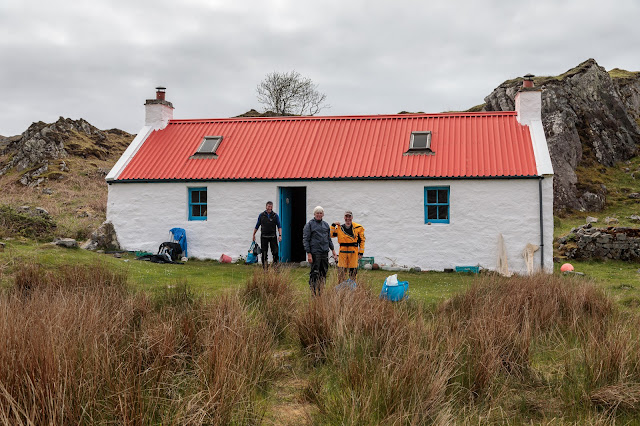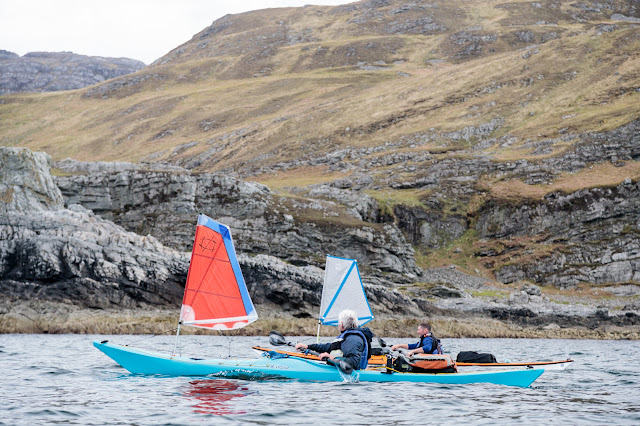...the morning's cold front began to clear leaving...
...Glengarrisdale in full sunshine.
Colonsay and Oronsay were now distant bumps on the horizon behind us.
All attention was now on the western entrance of the Corryvreckan ahead. As we approached, we could still see breaking standing waves on either side of Eilean Mor but our timing was impeccable and...
...as we slid our bows into the jaws of the 'vreckan, it had fallen fast asleep.
In fact at one point the water was so slack we had to resort to paddling. However, within 5 minutes of slack water we were travelling at...
...8km/hr with minimal paddling effort. Even Maurice began to relax due to the mill pond conditions as we crossed the mouth of Bagh Gleann nam Muc (Bay of the Glen of Pigs) and inside Eilean Beag. It is at this point that unstable standing waves appear at the end of the flood (especially if there is any swell from the west) and a race and anomalous waves develop during the ebb.
Leaving the Bay of Pigs our speed increased to...
...12km per hour as we approached Carraig Mhor and a quick glance astern...
...showed that Eilean Mor was already over 2km behind.
This telephoto shot through the Corryvreckan shows our last distant view of Colonsay on the horizon beyond Eilean Mor.
As we rounded Carraig Mhor, the narrowest part of the Corryvreckan, at 14km/hr David had his sail up and then proceeded to take his legs out for a stretch. Sam's only comment was "Legend!"
I have been through the Corryvreckan many times but this was easily the calmest. Just in case you think it is always like this, have a look at...
...this photo, taken when Tony and I were entering the Corryvreckan from the NW, it might just give you second thoughts..
As we passed Port nam Furm at the east end of the Corryvreckan, we entered the Sound of Jura and the last leg of our journey to Jura, Oronsay and Colonsay.

























































